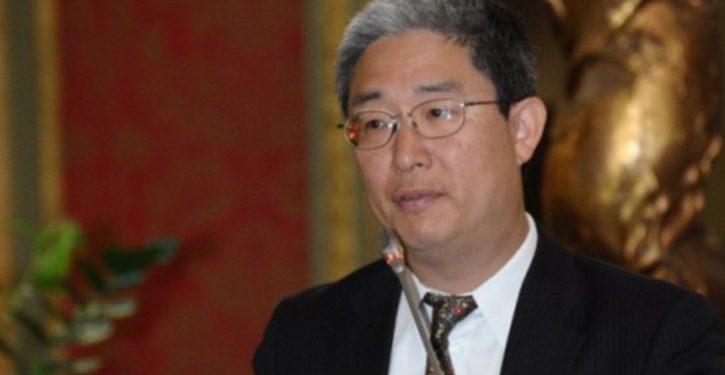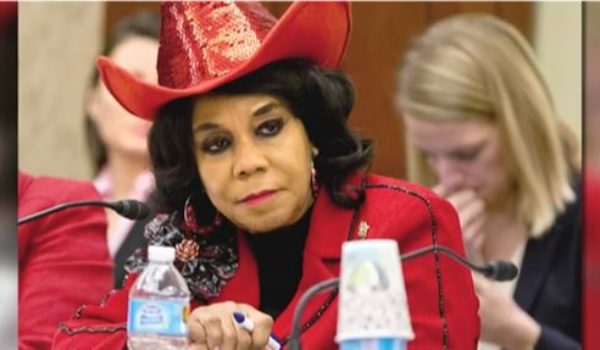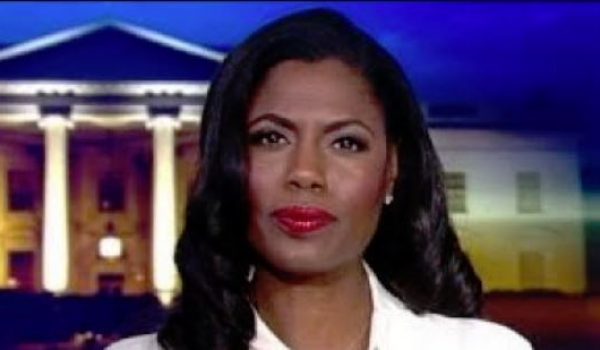
Rep. Devin Nunes (R-CA), chairman of the House Intelligence Committee, said something interesting last week. In an interview on Monday, 6 August, on Fox News, he urged viewers to “pay close attention” to information emerging about FBI official Bruce Ohr.
Ohr, Nunes said, would become “more and more important” in the Russiagate saga.
At the time, as Daniel Chaitin summarized it for the Washington Examiner, Nunes was talking about Ohr’s revealed role in ferrying information from dossier author Christopher Steele to the FBI – even after the FBI formally terminated Steele for cause as a confidential source.
Will this presidential election be the most important in American history?
Congressional investigators have found that Ohr, who was the fourth-highest ranking official in the Justice Department, acted as an intermediary between Steele after he was terminated as a source and the FBI’s investigation into ties between the Russians and President Trump’s 2016 campaign. When Ohr gave the bureau information from Steele, agents made a record of it, and those records are in the form of so-called 302 reports, in which the FBI agents write up notes of interviews during an investigation.
Nunes addressed Ohr’s significance again on Sunday, 12 August.
I discussed one aspect of Ohr’s import this weekend, in an analysis of his Steele-related notes – based on reporting from John Solomon at The Hill – suggesting that the main “Russian intelligence” source of the dossier’s allegations was fixer-about-D.C. Rinat Akhmetshin.
But previous situations involving Ohr may turn out to have bigger implications than that. The implications may be even bigger than what Devin Nunes is referring to.
Bruce Ohr could be a key to the nature of the Russiagate drama, at a structural level above the details of the narrative itself. He may represent what I would call the second cipher-clue: a defining waypoint in figuring out what this has all really been about.
What this has all NOT been about
The basic narrative is in tatters today, as evidence has piled up that the FBI, and other agencies of the U.S. government, were conducting operations against the Trump campaign weeks, if not months, before the late-July 2016 date on which the Obama administration supposedly became aware of allegations about George Papadopoulos and Carter Page.
Moreover, information about Carter Page, in particular, indicates that the FBI had been aware of his activities for years prior to the summer of 2016. He was a cooperating witness for them in an operation against Russian intelligence operatives in New York in 2013 – because he was targeted by the Russians for potential recruitment.
Paul Manafort had also been well known to the FBI for years prior to the 2016 election. When he joined the Trump campaign in March 2016, he was reportedly still under FISA surveillance as part of an investigation opened in 2014, based on concerns about work done even earlier for Ukrainian President Viktor Yanukovych. Carter Page had also been placed under FISA surveillance in 2014, according to the same CNN report.
Not only was Page a cooperating witness, incidentally, in the 2013 case, but the CNN report indicates the FBI dropped its Manafort investigation for lack of evidence. The FBI had both men under investigation — with electronic surveillance — for years, and did not make cases against them. There wasn’t suddenly going to be something to find in their pasts that the FBI didn’t already know about.
Facts like these clarify that there was no sudden awakening by the FBI to a scent of danger involving these men in 2016. Page and Manafort were both well-known quantities to the FBI at that point.
There are numerous other points reinforcing these two, and the purpose here is not to chapter-and-verse them all.
Rather, it is to lay out the emerging pivot points in our understanding of what the Russiagate saga has really been.
It has not been a law enforcement reaction to anything the Trump campaign did. It has been something else.
The first pivot point: The cipher-clue of the Obama task force
That judgment became increasingly inescapable about five months ago, when information began crystallizing for the public about the high-level task force Obama assembled in early August 2016, ostensibly in reaction to “intelligence” that the Russians were plotting against the U.S. election, and that Trump may be involved.
That task force, urged on Obama by John Brennan, was the enabling vehicle for all of the collaboration within the Obama administration to spy on the Trump campaign. At its core was an intelligence working group with about three dozen participants from the CIA, NSA, and FBI. An eventual product of the working group was the initial material that became the intelligence community assessment on Russia and the 2016 election.
Take a moment, however, to think about what this working group meant, along with the larger interagency task force. The CIA, NSA, and FBI are prohibited by law – the FISA law of 1978 – from ganging up to conduct surveillance of U.S. persons. This doesn’t mean they can never exchange information; we learned our lesson on that after 9/11. But they are supposed to do it in a carefully circumscribed and accountable manner. There basically should not be an ad hoc working group with participants from these three agencies under a counterintelligence charter roaming free against U.S. persons.
Now, maybe it’s the media that have been overplaying the “Trump collusion” element in the Russian-meddling narrative all along. But we cannot doubt that “Trump collusion” was already being touted by the DNC and the Hillary campaign, as well as the media, before the Obama task force was even formed – i.e., at the time of the Democratic National Convention in July 2016 – and that the Washington Post’s reporting on the task force in 2017 indicates the topic was part of the Obama administration’s decision-making process. (Regarding the “Trump collusion” narrative being spouted on Fusion GPS’ script in July 2016: I have written about it before, but Julie Kelly has a timely and especially telling piece about it this week at American Greatness.)
There’s really no taking that plot point back now. The consideration was there, and if it wasn’t a basis for the reaction, then nothing that followed makes sense.
The reason the task force is such an important pivot point, however, is a larger one. I outlined it in follow-on posts in March 2018 (here and here, for example), and the basic issue is this. If the Obama task force was really a reaction to an alarming development – clues about “Russian meddling” and even “Trump collusion” relating to the upcoming election – it should obviously have had a different focus, and a different set of outputs.
Securing the election against literal interference at the polls; warning candidate Trump (and candidate Clinton, for that matter) about apparent attempts to subvert a campaign organization; and pursuing the Russian actors, including warnings at a high government-to-government level – these are the essential things that should have been done.
Instead, we saw something very different. The Obama administration spent the latter half of 2016 putting out mixed, confusing signals about whether the election would come off safely. The administration itself was the chief source of anxiety about the election: Jeh Johnson popped up in public repeatedly to suggest it was in grave jeopardy, and therefore the federal government needed to gain greater power over state voting systems – while Obama said all was well.
Trump was never given a defensive briefing about any of the suspicions the FBI supposedly had about members of his campaign. Instead, the supposed suspicions were used as a pretext for the FBI to spy on the Trump campaign.
And as for the reaction to the Russian meddlers, the bumper-sticker on that is the report from Michael Isikoff and David Corn in their 2018 book Russian Roulette: that Susan Rice issued a “stand down” order on efforts to pursue that avenue. It wasn’t until December 2016, well after the election, that Obama took action by imposing some targeted sanctions on Russian officials.
Nothing the Obama task force did was about securing the 2016 election or dealing firmly with the Russians. Instead, most of what it did was about spying on Trump, and developing a case that something bad happened with the election that he may have been involved in.
That’s a pivot point, once it comes into focus. It inexorably, irrecoverably turns our perception of what this has all been about. It indicates strongly that the purpose of the task force, the Obama administration’s nexus of activity for Russiagate, was not to keep the election clean or defend it against Russia. The task force clearly had no such priority.
The second pivot point: The cipher-clue of Bruce Ohr
That in itself is a damning conclusion. The significance of Bruce Ohr may well yield the second one.
Ohr is scheduled for a closed-door session with Congress on 28 August. His direct role in Russiagate will certainly be of interest. But a caller last week to the Mark Levin radio show suggested another reason why Ohr may be a particularly illuminating figure in the drama.
According to the caller, Ohr had a responsible role in quashing the Drug Enforcement Agency’s pursuit of Hezbollah activities several years before the 2016 election. The caller, Derek Maltz, was a DEA agent who worked on what was called Project Cassandra, an effort to track and take down the vast Hezbollah network of drug-running and money-laundering to finance terrorism. The network, which stretched from the Americas to Africa and the Middle East, was operating in the United States.
Josh Meyer published an in-depth article at Politico on Cassandra in December 2017, outlining the complaints of DEA agents (including Maltz) that the Justice Department thwarted DEA’s push for vigorous prosecution of the hundreds of organizations identified in their investigations, from banks to used car dealerships.
And what Derek Maltz called in to tell Mark Levin last week is that Bruce Ohr, as the director of the Justice Department’s Organized Crime Drug Enforcement Task Force at the time, played a key role in blocking those DEA attempts. Maltz again alluded to the point made in Josh Meyer’s article: that although there were some prosecutions, once Project Cassandra had accumulated a tremendous amount of information over the course of 5-6 years, most of the network was actually left intact.
At the Daily Caller, Kerry Picket has transcribed quotes from Maltz’s discussion with Levin:
“We had about 300 businesses in America identified and we seized 150 million dollars out of their bank accounts, but we couldn’t get the U.S. interagency government to work together because of the constant infighting and the lack of sharing of information,” Maltz said to Levin.
He added, “But the real issue is that Bruce Ohr did nothing about it. He did not address it. There was no one held accountable. And these businesses are still operating in America right in our backyards. And this is what the public doesn’t realize.”
Maltz also provided an email statement to TheDC:
In an e-mail statement to The Daily Caller, Maltz said, “Bruce Ohr could have been more engaged with the interagency to unite the efforts since it was a major national security priority. We blew some awesome opportunities and we are dealing with terror groups so no excuses.”
“Not sure what happened with Bruce but now hearing about all this discreet stuff he was engaging in, it really makes me wonder. I’m not suggesting he was solely responsible for the lack of action but he was tasked to get it done and it didn’t get done.”
I would agree with Maltz: it is very unlikely that Ohr was solely responsible for the lack of action. Josh Meyer’s piece attributed it to a priority from the highest level of the Obama administration to avoid antagonizing Iran, at a time when Obama was doggedly pursuing a nuclear “deal.” That priority basically cancelled out the energy that might have overcome agency infighting and lack of information-sharing.
But an antiseptic “organizational dynamics” explanation doesn’t really cut it, given the gravity of the Hezbollah threat, which included not just pumping cocaine into the U.S. but destabilizing Central America alongside the local cartels — a major factor driving the flow of illegal migrants to the U.S. border — and making credible assassination threats to U.S. federal agents. Moreover, the arms Hezbollah was able to fund with its criminal network were affecting the civil strife in Iraq and Syria, and ultimately the U.S. troops deploying there to combat ISIS.
Think-tank expert Emanuele Ottolenghi provided broad-scope testimony to Congress on Hezbollah’s relevant activities after the Josh Meyer article came out. The record is here, and it makes informative reading. A very great deal was being ignored when the Obama administration chose not to pursue Hezbollah’s network vigorously.
The link to the Democratic Party
But there is another point, made at the time of the Meyer piece, and one that suggests very troubling implications. The “Project Cassandra” profile of Hezbollah’s operations has been remarkably similar to what the Pakistani Awan brothers’ little network was doing on Capitol Hill and in the D.C. Metro area starting in the mid-2000s. Shortly after the Meyer article appeared, Daily Caller’s Luke Rosiak, chief chronicler of the Awan saga, outlined the similarities — including the point that the Awan saga had a Hezbollah connection, as well as features like apparent money-laundering and used-car dealerships operating as front companies.
Meyer’s article and the revelations about Bruce Ohr’s role in Russiagate erupted in the span of a few days in December 2017. In fact, Fox correspondent Doug McKelway put it together at the time in a report on Lou Dobbs’ Fox Business Network broadcast. The Awan brothers’ activities’ obvious similarities to what Hezbollah had been doing, coupled with the Awans’ close link to dozens of Democratic representatives in the House for over a decade, had to demand answers from Bruce Ohr. (H/t: Independent Sentinel)
What was going on here? Ohr seemed to have turned a blind eye to so much nefarious activity, and then also ended up being implicated by connections to Fusion GPS and the Steele dossier.
Here’s why this is probably our second pivot. It’s not just about Bruce Ohr. But it is about what he symbolizes: continuity between earlier activity that hasn’t added up and hasn’t been explained, and involvement in the effort to spy on and implicate Trump.
The real “what was going on” question is about the Obama administration, the Democratic Party, the Hillary campaign, and very likely others unknown. There have been indications from the beginning of involvement by actors in Britain. The Awan brothers suggest a Pakistani connection of some kind. The hydra-headed provenance of the Steele dossier suggests links through its authors to Russia, starting with Oleg Deripaska, for whom Christopher Steele was also working, and Rinat Akhmetshin, who may have been Steele’s chief “Russian intelligence” source, and with whom Fusion GPS was working on behalf of another Russian oligarch, Denis Katsyv.
We don’t have answers yet, but the figure of Bruce Ohr may be the key to starting to ask the right questions. No intelligence analyst would ignore the emerging implication here. What’s really at issue is not the embarrassment for public officials of being caught running political dossiers or misusing government surveillance tools. It’s not about the embarrassment of other public officials at being caught with Pakistanis using their official computer accounts.
It’s about what, literally, was going on. It’s about why Pakistanis were using House Democrats’ official accounts — and what other Democrats (and possibly a few Republicans as well), and apparently the legacy media and other actors, were doing before 2016, to make the cost of simply accepting the outcome of the 2016 election seem too high to them.
None of them has any more credibility than Republican politicians would, in claiming that they had to turn to underhanded, cheating, lying methods in order to save America and the world from “Trump.” For one thing, no one even thought he was going to win at the time the skulduggery got underway.
But aside from that, the “noble goal” card has been devalued to zero at this point. It cannot justify either what they did, or why. Even viewing their efforts as a cover-up of some kind falls short of accounting for those efforts’ elaborately desperate and persistent quality. Cover-ups are eventually given up on. Scapegoats are selected, departures made; the twilight of obscurity embraced.
Whatever lies behind Russiagate looks more like something too valuable to be relinquished at any price. There’s a big difference between that and “too embarrassing to be caught with.”
It appears increasingly likely that the clues we need lie not with further parsing of the 2016 scheme, but with episodes like the Awan brothers’ bizarre career in the House, and with Uranium One, and the spiking of Project Cassandra. Those episodes, and a number of others, represent prices being paid — for something.
The question is what. Looking into why a functionary like Bruce Ohr ended up quashing Project Cassandra, and also being a linchpin of Russiagate, is likely to steer us in the right direction.




